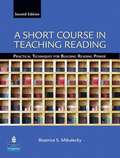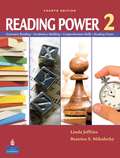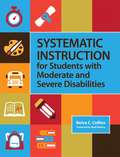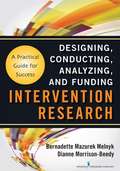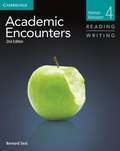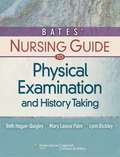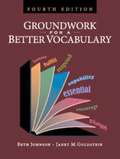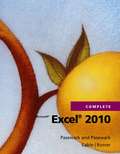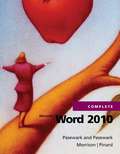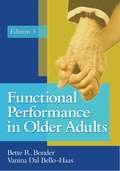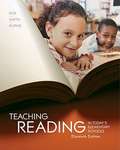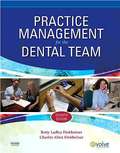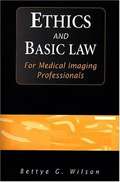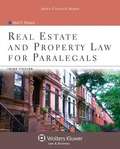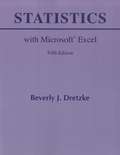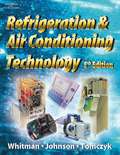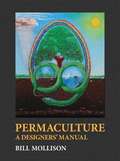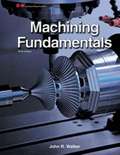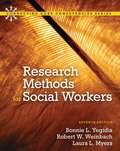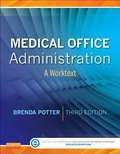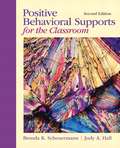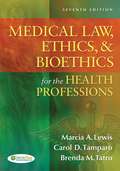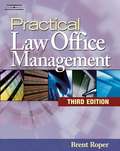- Table View
- List View
A Short Course in Teaching Reading: Practical Techniques for Building Reading Power, Second Edition
by Beatrice S. MikuleckyThis revision of the classical practical handbook A Short Course in Teaching Reading Skills combines reading theory with practical classroom application. An invaluable resource to the reading teacher, teacher-in-training, or administrator who wants to stress quality reading comprehension instruction, the principles apply to teenage through adult learners who already have basic decoding skills.
Reading Power 2 (Fourth Edition)
by Beatrice S. Mikulecky Linda JeffriesReading Power 2 is a new and updated edition of the successful student-centered reading skills textbook Reading Power. Its unique structure, featuring four parts to be used concurrently, allows low-intermediate-level students (with a 600-word vocabulary) to develop the multiple sills and strategies involved in the reading process. Overview Extensive Reading helps students to build reading fluency, broaden knowledge of vocabulary and collocation, and gain confidence. Vocabulary Building offers strategies for independent vocabulary learning such as dictionary work, guessing meaning from context, and learning how words work in sentences. Comprehension Skills teaches reading skills such as recognizing words and phrases, scanning for information, and making inferences. Reading Faster builds awareness of reading speed, provides strategies and exercises for increasing speed, and offers charts for tracking progress. New to the Fourth Edition An updated Extensive Reading section with a unit on fiction and non-fiction reading, more activities for evaluating student progress, and a revised suggested reading list Enhanced vocabulary features including new "Focus on Vocabulary" exercises and an expanded Vocabulary Building section There is also a Teacher Guide with Answer Key and a Test Booklet for Reading Power 2. The Reading Power series also includes: Basic Reading Power 1 (Third Edition): Beginning Reading Power 2 (4th Edition): Intermediate More Reading Power 3: High-Intermediate Advanced Reading Power 4: Advanced
Systematic Instruction For Students With Moderate And Severe Disabilities
by Belva C. CollinsTo ensure the best outcomes for students with moderate and severe disabilities, K 12 educators need to understand what constitutes good instructional practices and how to apply them in any classroom, with any curriculum. All the how-to guidance they need is in this accessible text on systematic instruction, a highly effective teaching approach rooted in applied behavior analysis. Developed by a seasoned educator who has trained thousands of teachers, this one-of-a-kind textbook fully prepares teachers to use systematic instruction procedures to link core content with critical life skills. Future educators will discover evidence-based methods that help them collect accurate screening and baseline data before instruction effectively use specific systematic instruction procedures make instruction more efficient by weaving non-targeted information into lessons improve students' communication skills through naturalistic language strategies expertly organize and deliver small-group systematic instruction enhance instruction with assistive technology plan successful instructional schedules for students across settings and teachers maximize instruction time by involving peers, paraprofessionals, and service delivery personnel help students maintain new skills and generalize them to other settings An ideal textbook for a wide range of teacher preparation courses, this student-friendly book includes sample lesson plans, chapter objectives, reflection questions, and a glossary. And the practical materials including 20 blank data collection sheets and quick step-by-step charts of instruction procedures make this an invaluable resource for in-practice educators. A comprehensive guide to the why and how of systematic instruction, this is the accessible text teachers need to succeed in inclusive classrooms and improve outcomes for students with moderate and severe disabilities.
Intervention Research: Designing, Conducting, Analyzing, and Funding
by Bernadette Mazurek Melnyk Dianne Morrison-BeedyThis book is a practical, user-friendly guide for health care researchers across multiple disciplines who are involved in intervention research. It provides all of the essential elements needed for understanding how to design, conduct, analyze, and fund intervention studies that are replicable and can withstand the scrutiny of the Institutional Review Board and peer review. Developed from an annual continuing education workshop on intervention studies conducted by Dr. Melnyk, this text is the most comprehensive body of information available on this topic. Contributors address the design of interventions that are ethically considerate and sensitive to culture, race/ethnicity, and gender, minimizing threats to external and internal validity, measurement, and budgeting. The guide explores such implementation issues as subject recruitment and retention, data management, and specialized settings, cost analysis, and explaining intervention effects. The text also guides readers in writing grant applications that fund, and addresses how to move intervention study findings into the real world. A unique addition to the book is the availability of digital examples of progress reports, final reports, and research grant applications that have received funding from the National Institutes of Health and other relevant organizations. This text is a valuable resource for all health care professionals conducting research and for doctoral students in health care studies. Key Features: Presents the essential tools for designing, conducting, analyzing, and funding intervention studies Designed for use by health care professionals conducting intervention research Provides comprehensive, accessible guidelines for doctoral students across all health care disciplines Instructs readers on writing grant applications that fund Includes digital examples of funded research grants, progress reports, and final reports.
Academic Encounters, Level 4: Human Behavior (2nd Edition)
by Bernard SealThe Academic Encounters 2nd edition series uses a sustained content approach to teach skills necessary for taking academic courses in English. There are two books for each content area. Academic Encounters Level 4 Reading and Writing Human Behavior engages students with authentic academic readings from college textbooks, photos, and charts on stimulating topics from the fields of psychology and communications. Topics include health, intelligence, and interpersonal relationships. Students develop important skills such as skimming, reading for the main idea, reading for speed, understanding vocabulary in context, summarizing, and note-taking. By completing writing assignments, students build academic writing skills and incorporate what they have learned. The topics correspond with those in Academic Encounters Level 4 Listening and Speaking Human Behavior. The books may be used independently or together.
Organizational Behavior v 1.1
by Talya Bauer Berrin ErdoganTwo leading researchers in Management, Talya Bauer and Berrin Erdogan, bring you a new Organizational Behavior textbook that bridges the gap between theory and practice with a distinct "experiential" approach. On average, a worker in the USA will change jobs 10 times in 20 years. In order to succeed in this type of career situation, individuals need to be armed with the tools necessary to be life-long learners. To that end, this book is not be about giving students all the answers to every situation they may encounter when they start their first job or as they continue up the career ladder.
Principles of Management
by Talya Bauer Mason Carpenter Berrin ErdoganPrinciples of Management by Carpenter, Bauer and Erdogan teaches management principles to tomorrow's business leaders by weaving three threads through every chapter: strategy, entrepreneurship and active leadership. Strategic: All business school teachings have some orientation toward performance and strategy and are concerned with making choices that lead to high performance. Principles of Management will frame performance using the notion of the triple bottom-line the idea that economic performance allows individuals and organizations to perform positively in social and environmental ways as well. The triple bottom line is financial, social, and environmental performance. It is important for all students to understand the interdependence of these three facets of organizational performance. The Entrepreneurial Manager: While the General Management course at Harvard Business School was historically one of its most popular and impactful courses (pioneered in the 1960s by Joe Bower), recent Harvard MBAs did not see themselves as general managers. This course was relabeled 'The Entrepreneurial Manager' in 2006, and has regained its title as one of the most popular courses. This reflects and underlying and growing trend that students, including the undergraduates this book targets, can see themselves as entrepreneurs and active change agents, but not just as managers. By starting fresh with an entrepreneurial/change management orientation, this text provides an exciting perspective on the art of management that students can relate to. At the same time, this perspective is as relevant to existing for-profit organizations (in the form intrapreneurship) as it is to not-for-profits and new entrepreneurial ventures. Active Leadership: Starting with the opening chapter, Principles of Management show students how leaders and leadership are essential to personal and organizational effectiveness and effective organizational change. Students are increasingly active as leaders at an early age, and are sometimes painfully aware of the leadership failings they see in public and private organizations. It is the leader and leadership that combine the principles of management (the artist's palette, tools, and techniques) to create the art of management. Cases: Mason provides brief cases in his Instructors Manual for those who take a case approach to the course or who wish to incorporate cases. This book's modular format easily maps to a POLC course organization (Planning, Organizing, Leading, and Controlling, attributed to Henri Fayol (1949, General and industrial management. London. Pitman Publishing company), and suits the needs of most undergraduate or graduate course in Principles of Management.
Bates' Nursing Guide to Physical Examination and History Taking
by Beth Hogan-Quigley Lynn S. Bickley Mary Louise PalmThis text presents the renowned Bates Assessment content with a nursing-oriented approach. Throughout, content relevant to the RN-level nurse is emphasized.
Groundwork for a Better Vocabulary
by Janet M. Goldstein Beth JohnsonBuilding a better vocabulary will help you gain confidence in reading, writing, speaking and thinking. This textbook is particularly useful for people learning English as a second language.
Microsoft Excel 2010 Complete
by Beth Pasewark Wadsworth Carolyn Denny Pasewark Jan Pasewark Stogner Scott G. Pasewark William R. Pasewark Sr. William R. Pasewark Jr. Robin M. Romer Sandra CableMicrosoft Excel 2010 Complete is designed for beginning users. It demonstrates the tools and features for this program in an easy-to-follow, hands-on approach. Students will learn to use the application through a variety of activities, simulations, and case projects. This self-paced, step-by-step book makes learning easy and enjoyable. End-of-lesson exercises reinforce the content covered in each lesson and provide students with the opportunity to apply the skills that they have learned.
Microsoft Word 2010 Complete
by Beth Pasewark Wadsworth Carolyn Denny Pasewark Jan Pasewark Stogner Katherine T. Pinard Scott G. Pasewark Connie Morrison William R. Pasewark Sr. William R. Pasewark Jr.Microsoft Word 2010 Complete provides a thorough introduction of Microsoft Word 2010 skills to beginning learners. This text includes features that make learning easy and enjoyable, yet challenging for students. Students will be engaged with activities that range from simulations to case studies that challenge and sharpen problem-solving skills while gaining the hands-on practice needed to be confident and successful computer users.
Functional Performance in Older Adults (Third Edition)
by Bette R. Bonder Vanina Dal Bello-Haas Marilyn B. Wagner Bette Bonder Vanina Bello-Haas"The contributors represent diverse disciplines, however their messages create a coherent, integrated work of universal interest and application. I highly recommend the use of this text for allied health students who are studying geriatric rehabilitation and for clinicians who wish to renew their knowledge. "--Carole Knight, MEd, OTR/L, Occupational Therapy in Health Care Journal, Volume 16, Number 2/3 February 2003, review of the 2nd Edition. The ideal resource for rehabilitation professionals who are working with or preparing to work with older adults! It describes the normal aging process, illustrates how health and social factors can impede an aging person's abilities, and demonstrates how to develop mechanisms for maximizing the well-being of older adults.
Teaching Reading in Today's Elementary Schools Eleventh Edition
by Betty D. Roe Sandy H. SmithThis market-leading text sets the standard for reading instruction to ensure that aspiring teachers are able to help students learn not only how to recognize words, but also how to comprehend what they read--and enjoy the process. The book balances new approaches to reading, such as language arts integration and emergent literacy/literacy as a continuum, with more traditional foundations of strong skills and phonics instruction. Updates to the Eleventh Edition include discussion of the latest technology for literacy learning, how writing instruction impacts literacy learning, and recent movements in literacy assessment.
Practice Management for the Dental Team (Seventh Edition)
by Betty Ladley Finkbeiner Charles Allan FinkbeinerThis book gives a broad overview of the dental business operations and also elaborates on how to set up the business office and select staff, equipment, and supplies to maintain this vital part of the practice.
Ethics and Basic Law for Medical Imaging Professionals
by Bettye G. WilsonComplies with ASRT curriculum guidelines requiring coverage of ethical theory, behavior, and dilemmas; legal responsibilities; and patient consent. Provides coverage of special issues, such as the impaired colleague and special patient populations, including the terminally ill patient and the patient with an infectious disease. Discussion questions facilitate classroom discussion and student analysis. Each chapter includes objectives and an end-of-chapter summary.
Real Estate and Property Law for Paralegals
by Neal R. Bevans BevansReal Estate and Property Law for Paralegals provides a solid foundation in the basics including the practicalities of daily legal work. Its broad coverage of all the key topics that paralegals need to know includes basic elements of real property, different methods used to record and describe property, transfer of title, the rights associated with real estate ownership,elements of real estate contracts, landlord/tenant law, deeds, mortgages,restrictions on land use, title insurance and title examinations, the closing process, and tax implications. Practical skills are emphasized throughout the book so that students will develop a true understanding of what it is like to practice in the real world. An easy-to-read and engaging style utilizes numerous examples and illustrations, always emphasizing the practical nature of real estate law. Each chapter opens with objectives and closes with Key Terms, Review Questions, and Practical Applications exercises. In every chapter, an "Issue at a Glance" box summarizes important legal concepts, and"Skills You Need in the Real World" sections highlight particular paralegal skills. Marginal definitions; numerous figures, tables, and forms; and case excerpts that discuss legal theory and applications round out the significant pedagogy. Additionally, Websites that can help students gather more information are strategically placed. An in-depth Instructor's Manual includes a test bank, lesson plans, suggested syllabi, web resources, additional assignments and PowerPoint slides for each chapter. The revised Third Edition provides a wealth of updated forms and cases. New website references make the book current, and fine-tuned text discussions have been expanded where appropriate. A new interactive workbook is available at the website to accompany the book.
Statistics With Microsoft Excel (Fifth Edition)
by Beverly DretzkeStatistics with Microsoft Excel, Fifth Edition, shows readers how to use Microsoft Excel® to perform statistical analysis. This step-by-step guide has been updated to cover the new features and interface of Excel 2010. Datasets and other resources (where applicable) for this book are available here.
Refrigeration and Air Conditioning Technology (5th Edition)
by William C. Whitman Bill Johnson John TomczyckRefrigeration and Air Conditioning Technology is designed and written for students in vocational-technical schools and colleges, community colleges, and apprenticeship programs. The content is in a format appropriate for students who are attending classes full-time while preparing for their first job, for students attending classes part-time while preparing for a career change, or for those working in the field who want to increase their knowledge and skills. Emphasis throughout the text is placed on the practical applications of the knowledge and skills technicians need to be productive in the refrigeration and air-conditioning industry.
Permaculture: A Designers' Manual
by Bill MollisonThis edition was compiled for teachers, students and designers as they master the art of assembling conceptual, material, and strategic components in a pattern which functions to benefit life in all its forms.
Machining Fundamentals
by Bob Dixon John WalkerMachining Fundamentals is a comprehensive text that provides an introduction to the various machining operations, setups, and procedures. This colorful and detailed textbook covers all traditional machining methods, as well as newer and nontraditional methods. This edition includes expanded coverage of CNC machining and updated illustrations. Clear, easy-to-understand introduction to machining. Strong emphasis on safety throughout the textbook. Heavily illustrated with well-designed, color-coded artwork to help students understand concepts quickly. Clear and simple organization of content makes the textbook easy to use.
Research Methods for Social Workers
by Bonnie L. Yegidis Robert W. Weinbach Laura L. MyersThis social work research methods text is written in an accessible, reader-friendly style and includes numerous examples of how research can be used to inform social work practice. It is part of the Connecting Core Competencies Series that integrates CSWE's core competencies and practice behaviors throughout.
Medical Office Administration, Third Edition
by Brenda A. PotterMedical Office Administration, Third Edition, explores the career of a medical administrative assistant, beginning with an examination of the profession and the health care industry, and continuing on to the daily responsibilities of a medical administrative assistant. The text is organized into five units and 16 chapters which are designed to prepare the student for employment as a medical administrative assistant.
Positive Behavioral Supports for the Classroom
by Brenda K. Scheuermann Judy A. HallThe field of positive behavioral intervention and support is expanding rapidly, and the revised and reorganized second edition of Positive Behavioral Supports for the Classroom reflects the newest research and most exciting advances. With a new emphasis on the three-tier response-to-intervention model, the text continues to deliver readers an array of research-based strategies and techniques for strengthening appropriate behaviors and reducing challenging ones. Tackling both the "hows" and "whys" of behavioral management in the classroom, this text combines theory and practice in a way that helps students understand and apply effective strategies for behavioral support, assessment, and intervention in both school-wide settings and on an individual basis.
Medical Law, Ethics, and Bioethics for the Health Professions (Seventh Edition)
by Marcia A. Lewis Carol D. Tamparo Brenda M. TatroNow in its Seventh Edition, this groundbreaking book continues to champion the "Have a Care" approach, while also providing readers with a strong ethical and legal foundation that enables them to better serve their clients. The book addresses all major issues facing healthcare professionals today, including legal concerns, important ethical issues, and the emerging area of bioethics.
Practical Law Office Management (3rd Edition)
by Brent RoperPractical Law Office Management, third edition focuses on law office management from a practical standpoint. Designed for the paralegal student interested in day-to-day law office management topics, this text focuses on client relations and communication skills; legal fees, timekeeping, and billing, client trust funds and law office accounting; calendaring, docket control, and case management; legal marketing; and file and law library management. This revised edition offers an extended focus on technology, including a full demonstration of Thomson's ProLaw software and in-depth software tutorials. It includes up-to-date charts and graphs that present material in an easy-to-understand context. Each chapter now includes thought-provoking questions, and expanded and interesting case studies that deal with unique facts specific to practicing paralegals appear after most chapters. To expand the technology focus of the text, Excel exercises appear in the timekeeping and billing and trust account chapters. In addition, this revised text has a strong ethics focus throughout, with ethics-related cases included at the end of nearly every chapter.
